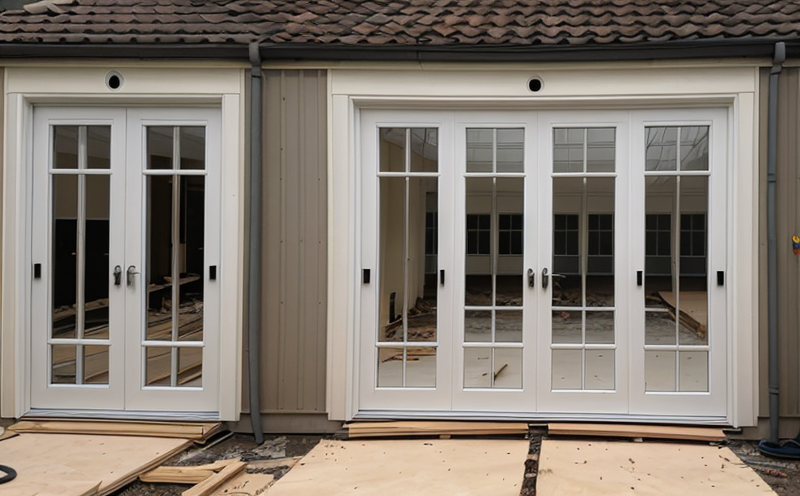Fire Performance Testing of Revolving Doors
The fire safety performance testing of revolving doors is a critical component in ensuring public and occupant safety. In the event of an emergency, such as a fire or other hazardous situation, revolving doors must perform reliably to allow for safe evacuation. This service involves comprehensive testing to evaluate the fire resistance, integrity, and stability of these specialized door assemblies.
Revolving doors are unique in their design, with multiple panels rotating around a central axis. The fire performance test aims to assess how well each panel can withstand exposure to heat, flames, or smoke for a specified period without compromising the structural integrity of the assembly. This includes evaluating the door's ability to maintain an effective barrier against the spread of fire and smoke.
The testing process typically begins with the preparation of the specimen. Depending on the specific requirements set by regulatory bodies (such as ISO 17693-2), a representative sample is selected from the production batch of revolving doors. This ensures that any issues identified during testing are reflective of potential problems in the overall product line.
Once prepared, the specimen undergoes rigorous testing using specialized equipment designed to simulate real-world fire scenarios. The test setup often includes an ignition source capable of generating controlled flames and heat levels according to specified standards like EN 1634-2 or ASTM E108. During this phase, critical parameters such as temperature rise within different sections of the door assembly are monitored closely.
Other important considerations include observing any deformation in structural components under load conditions while exposed to extreme temperatures. Additionally, pressure differences across the door during and after exposure serve as indicators of its performance capabilities. By analyzing these factors alongside visual inspections for signs like charring or melting materials, technicians can determine whether a revolving door meets necessary safety standards.
Upon completion of all testing procedures, detailed reports are prepared summarizing findings from each aspect evaluated during the process. These documents provide valuable insights into areas where improvements may be needed along with confirmation that compliance has been achieved according to relevant codes and regulations.
- Temperature rise within various parts of the door assembly
- Structural integrity assessment post-fire exposure
- Visual inspection for visible signs of damage or deterioration
- Pressure differentials measured before, during, and after testing
Industry Applications
The fire performance testing of revolving doors finds application across various sectors where high levels of safety are paramount. Hospitals, airports, shopping malls, office buildings – all these locations benefit from the enhanced security provided by properly tested revolving doors.
In healthcare facilities, for instance, timely evacuation during emergencies can mean the difference between life and death. Ensuring that revolving doors meet stringent fire safety standards helps protect patients, visitors, staff members, and others who rely on these establishments for care.
Airports also prioritize passenger safety above all else. In case of a fire or other emergency situation at an airport terminal, having reliable revolving door systems ensures that people can exit safely without obstruction. The same principle applies to large commercial spaces like shopping centers and office complexes where maintaining smooth traffic flow during evacuations is essential.
Eurolab Advantages
At Eurolab, we pride ourselves on offering unparalleled expertise in fire safety testing of revolving doors. Our state-of-the-art facilities are equipped with the latest technology and methodologies to ensure accurate results every time.
We employ highly skilled professionals who possess deep knowledge about both theoretical aspects of fire science as well as practical implementation strategies. This dual approach allows us to provide comprehensive services tailored specifically towards meeting client needs while adhering strictly to industry best practices.
Our commitment extends beyond just performing tests; it includes proactive measures aimed at preventing future issues through preventive maintenance advice and ongoing consultation on design improvements based on current regulatory trends.





